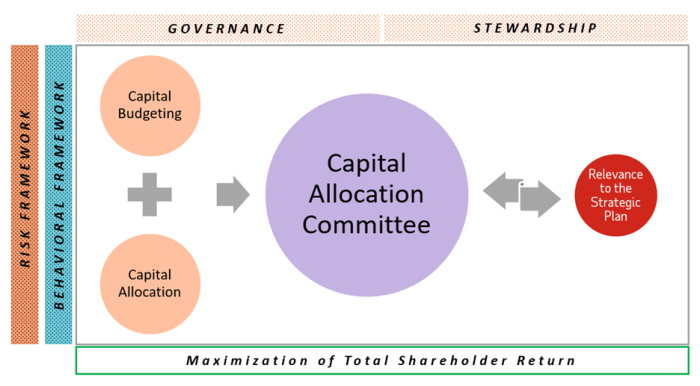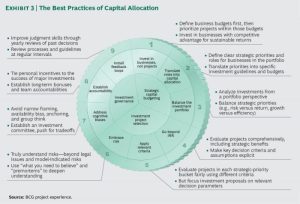
Embark on a journey into the realm of Capital Allocation Decision Making, where strategic choices shape the future of businesses, resource utilization is key, and growth is the ultimate goal.
Discover the intricate balance between short-term gains and long-term vision, the methodologies that guide decisions, and the transformative role of technology in modern capital allocation.
Introduction to Capital Allocation Decision Making

Capital Allocation Decision Making in finance refers to the process of determining where and how to invest a company’s financial resources in order to achieve its strategic objectives and maximize shareholder value.
Effective capital allocation is crucial for business growth and sustainability. By making strategic decisions on how to allocate capital, companies can prioritize investments that will generate the highest returns and create long-term value for the organization.
The Importance of Strategic Capital Allocation
One of the key reasons why capital allocation decision making is important is that it allows companies to align their investments with their overall strategic goals. By allocating resources to projects that are in line with the company’s vision and objectives, businesses can ensure that they are investing in areas that will drive growth and profitability.
Furthermore, strategic capital allocation helps companies to optimize resource utilization by directing funds to projects that offer the highest potential returns. This ensures that limited resources are allocated efficiently and effectively, maximizing the value created for shareholders.
Factors Influencing Capital Allocation Decisions
When it comes to making capital allocation decisions, there are several key factors that can greatly impact the outcome. These factors play a crucial role in determining where a company chooses to invest its resources and how it prioritizes different opportunities.
Short-term vs. Long-term Considerations
In capital allocation decisions, companies need to consider both short-term and long-term implications. Short-term considerations may include immediate financial needs, liquidity requirements, and current market conditions. On the other hand, long-term considerations involve factors like growth potential, sustainability, and strategic goals. Balancing these two perspectives is essential for making sound decisions that benefit the company in the short and long term.
Market Conditions Influence
Market conditions have a significant impact on capital allocation strategies. During periods of economic growth, companies may be more inclined to invest in expansion projects, new ventures, or research and development. Conversely, in times of economic uncertainty or downturn, companies may prioritize preserving cash, reducing debt, or focusing on core operations. Adapting to market conditions and adjusting capital allocation strategies accordingly is crucial for maintaining financial stability and seizing opportunities for growth when they arise.
Methods and Frameworks for Capital Allocation

When it comes to making capital allocation decisions, various methodologies and frameworks are used to evaluate investment opportunities and assess the risk-return trade-off. These tools help organizations determine where to allocate their financial resources effectively.
Net Present Value (NPV)
Net Present Value (NPV) is a popular framework used to assess the profitability of an investment by calculating the present value of all expected cash flows. A positive NPV indicates that the investment is expected to generate more cash inflows than outflows, making it a viable option for capital allocation.
Internal Rate of Return (IRR)
Internal Rate of Return (IRR) is another method that helps in evaluating the profitability of an investment. It calculates the discount rate at which the present value of expected cash inflows equals the initial investment. The higher the IRR, the more attractive the investment opportunity is for capital allocation.
Payback Period
The Payback Period is a simple method used to determine how long it will take for an investment to recoup its initial cost through the cash flows it generates. This framework is often favored by organizations looking for quick returns on their investments.
It is important to consider a combination of these frameworks and methodologies to make well-informed capital allocation decisions.
Role of Technology in Capital Allocation
Technology has significantly transformed the landscape of capital allocation decision-making processes, revolutionizing how companies allocate resources and investments. The integration of advanced technology tools has enabled organizations to make more informed and data-driven decisions, leading to improved efficiency and effectiveness in capital allocation strategies.
Use of Data Analytics and AI
Data analytics and artificial intelligence (AI) play a crucial role in enhancing capital allocation efficiency by providing valuable insights and predictive analytics. These technologies help organizations analyze large volumes of data quickly and accurately, identifying trends, patterns, and opportunities that might have been overlooked through traditional methods. By leveraging data analytics and AI, companies can optimize their capital allocation decisions, minimize risks, and maximize returns on investments.
Impact of Digital Tools
Digital tools have revolutionized the way companies monitor and evaluate their capital allocation strategies. Through the use of advanced software and platforms, organizations can track the performance of various projects, assess risks in real-time, and adjust their allocation decisions accordingly. These tools provide greater transparency, visibility, and control over the entire capital allocation process, enabling companies to make timely and informed decisions that align with their strategic goals.
Relationship Between Capital Allocation and Capital Growth
Effective capital allocation plays a crucial role in determining the growth trajectory of a company’s capital. Capital growth refers to the increase in the overall value of a company’s assets and investments over time, reflecting its financial health and success in generating returns for shareholders.
Significance of Capital Growth in Financial Management
Capital growth is a key indicator of a company’s ability to generate wealth and create value for its stakeholders. It reflects the company’s profitability, efficiency, and strategic decision-making, all of which are essential for long-term sustainability and competitiveness in the market.
- Capital growth is a vital measure of financial performance and success, indicating the company’s ability to generate positive returns on investments.
- It influences the company’s market value, stock price, and attractiveness to investors, affecting its ability to raise capital for future growth and expansion.
- Capital growth is essential for reinvestment in business operations, research and development, acquisitions, and other strategic initiatives that drive innovation and competitive advantage.
Examples of Companies Excelling in Capital Allocation for Capital Growth
- Apple Inc.: Apple has been known for its strategic capital allocation decisions, including investments in research and development, acquisitions of innovative technologies, and stock buybacks, leading to significant growth in market capitalization and shareholder value.
- Berkshire Hathaway: Warren Buffett’s investment firm has a long history of successful capital allocation, focusing on value investing, long-term growth, and prudent risk management, resulting in substantial capital growth and wealth creation for shareholders.
- Amazon: Amazon’s aggressive expansion strategy, investments in technology, logistics, and new business ventures, along with effective capital allocation in high-growth areas, have propelled the company’s rapid capital growth and dominance in the e-commerce and cloud computing sectors.
In conclusion, Capital Allocation Decision Making stands as a cornerstone of financial strategy, driving sustainable growth and shaping the success stories of tomorrow. Dive into this dynamic world and unlock the potential for your business today.
Quick FAQs
What are the key factors influencing capital allocation decisions?
Factors such as market conditions, risk-return trade-off, and resource availability play a crucial role in shaping capital allocation choices.
How does technology impact capital allocation decision-making?
Technology enhances efficiency through data analytics and AI, revolutionizing how businesses allocate capital for optimal results.
What is the relationship between capital allocation and sustainable growth?
Effective capital allocation decisions fuel sustainable growth, driving financial success and positioning companies for long-term prosperity.






